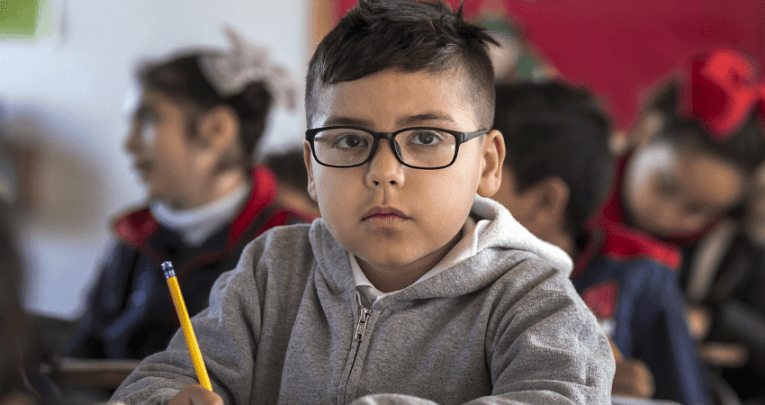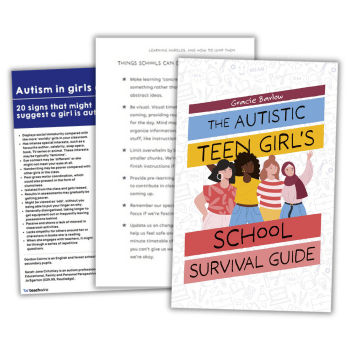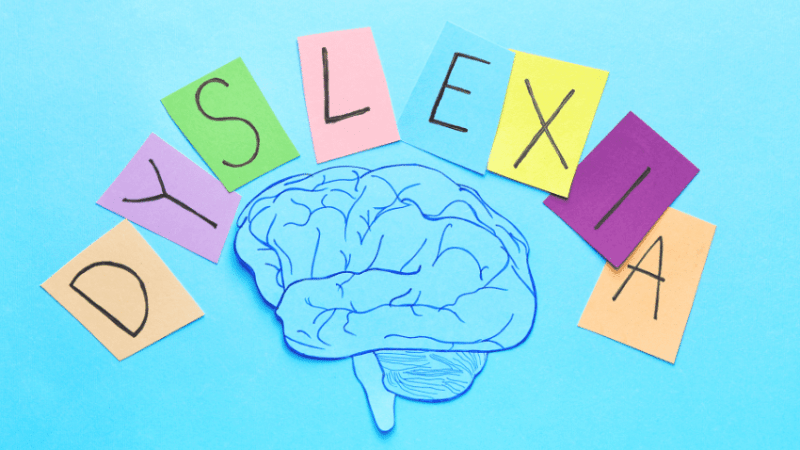Inclusion in schools – Practical, evidence-based steps to try

Support students with SEND and create a truly inclusive learning environment in your school with these practical steps…

- by Teachwire
- Classroom expertise and free resources for teachers

Support the needs of students with SEND in your school with these practical inclusion ideas from Professor Geoff Baker, Craig Lomas and Angela Scott…
Table of contents
Why is inclusion in schools more important than ever?
As the number of young people receiving diagnoses for additional needs has increased exponentially, mainstream schools have become increasingly diverse spaces.
Due to lack of funding, students who might once have received a space in a special school now instead find themselves needing to access mainstream settings.
This can leave schools in the unenviable position of trying to meet needs that are beyond their capacity, while managing the expectations of families who believe that a diagnosis will immediately see their children start to receive an enhanced – and frequently unrealistic – level of support.
That said, certain high-impact strategies can go a long way towards making classrooms more inclusive spaces in which all students are more likely to flourish.
Five evidence-based principles for inclusion in schools
1. Adopt a flexible, reflective mindset
Even with the best-prepared lessons, there’s no guarantee that they’ll yield the outcomes you’re seeking. The smallest variable can derail all that careful planning. This is only likely to increase when working with students who have additional needs.
By developing a reflective professional mindset, however, we can come to see such issues as opportunities for professional growth, rather than failures.
“Certain high-impact strategies can go a long way towards making classrooms more inclusive spaces”
Implementing self-reflection processes and working with colleagues as part of a community of practice can aid this.
A good self-reflection process will highlight any areas for development and existing positives, while simultaneously incorporating a range of different perspectives. This may be from discussions with colleagues, or from engaging with the research around a particular issue.
2. Tailor your approach
Engage with your students to create a space for learning where everyone has a voice, all opinions are welcome and all learners enjoy equal opportunities.
In truly inclusive settings, that engagement will extend to the creation of meaningful relationships. This requires an authentic approach, and the tailoring of curriculum and pedagogical approaches to ensure relatability. This is so that students can discuss their opinions, interests and experiences in a more purposeful way.
Gaining an understanding of your students’ cultural and socio-economic backgrounds, and using this understanding to inform your teaching strategies and curriculum planning, can be a powerful tool when striving for inclusivity.
Be sure to also moderate your language. Use relatable examples when explaining abstract concepts, so that you’re relying less on students’ cultural capital.
Inclusive classrooms should:
- instil a sense of community
- encourage frequent collaborations and peer-to-peer interactions to build respect among differently able students from different backgrounds
- seek to encourage empowerment and student agenc. This is where learners become more actively involved in their own education, facilitated by teachers providing more opportunities for choice
3. Use high-value strategies
Research into cognitive overload tends to focus on children and young people with SEN, and less on the cognitive overload of teachers and leaders. However, teachers are the engines of any inclusive learning environment.
The brain capacity of the education workforce faces daily challenges from three types of cognitive load:
- intrinsic load, centring on subject matter
- germane load, pertaining to the integration of new information
- extraneous load, which involves cognitive demands not related to learning
Teacher development aimed at promoting inclusion will often concentrate on the creation of learner-friendly environments for discrete categories of pupils with SEND.
However, research shows that this approach can have mixed impact, due to its excessive germane and extraneous load for teachers.
The science suggests that there can be pronounced neurological similarities across many ‘types’ of SEND. Different students who may, for example, have ADHD; who are on the autism spectrum; and who present persistent literacy difficulties will share some differences and challenges with respect to their executive function. However, they’re also likely to have a strong preference for visual approaches from teachers.
Evidence suggests that what these different learners have in common is:
- a need for more time for thinking and processing
- access to visual tools they can use for planning and organising
- a need to hear succinct, unambiguous language from the adults around them
These are high-value strategies – core pedagogical approaches which, if intensified, can provide a strong framework for nurturing independent learning behaviours.
Replacing discretely siloed ‘autism-friendly’, ‘dyslexia-friendly’ and ‘ADHD-friendly’ teacher development initiatives with a commonly agreed toolkit of high-value strategies can achieve the whole school sense of coherence needed for inclusive practice.
Matching the learning profiles of a diverse population with common core requirements will result in a lower cognitive load for teaching staff.
4. Utilise pre- and post-teaching
For inclusive environments to endure, policies and practices must actively promote co-activated, sequential rehearsal and application of information.
This is where scaffolding through pre- and post-teaching comes in. ‘Pre-teaching’ prepares learners for the concepts and skills that will be addressed in a given lesson before they encounter them.
“Matching the learning profiles of a diverse population with common core requirements will result in a lower cognitive load for teaching staff”
It provides a platform through which key vocabulary, complex language concepts and upcoming expectations of a lesson or an event can be introduced and rehearsed. This may be supported by well-focused language and visual scaffolds.
These visual cues can then be taken into a lesson and used by learners to help reduce cognitive load. This leaves more space for engagement with learning through collaborative peer work and independent activities.
The co-activation phase created by pre-teaching can be embedded through follow-up rehearsal and application via carefully tailored post-teaching activities.
This is where so-called ‘mental state words’ can become hugely important, as a way of promoting metacognitive thinking to learners. Key mental state words for any post-teaching session may include:
- believe
- know
- think
- imagine
- guess
These words frame concepts designed to take learning beyond a strictly informational level, and into a neurologically deeper form of learning that entails relating, generalising and applying.
Slowing down these processes of thinking and probing beyond the informational level can generate that essential element of curiosity.
This combination of pre- and post-teaching with sound metacognitive approaches and use of mental state words will ensure learners requiring SEN provision are armed with sufficient information to engage fully in lessons and events beyond the classroom.
5. Harness technology
The recent emergence of artificial intelligence presents opportunities for students with specific needs to access the same education as their peers.
Technology can also facilitate differentiated instruction. It can enable teachers to provide a range of resources for students that can be tailored to meet individual learning needs.
AI software, such as ChatGPT, can further transcribe verbal instruction in real-time, to support learners with communication barriers.
When integrated thoughtfully, technology can play a major role in the creation of inclusive educational settings.
Professor Geoff Baker is CEO of True Learning Partnership MAT and Emeritus Professor of Education at the University of Greater Manchester. Craig Lomas is a Senior Lecturer in Education at the University of Greater Manchester. Angela Scott is National Lead for SEND for Eastern Leadership UK.
Child-centred inclusion strategies for primary schools
Try these three key steps to develop a truly inclusive learning environment in your primary setting, says Will Cannock…
At Charles Dickens Primary School in Southwark, we have a higher-than-average number of pupils with SEND. Therefore, we place great emphasis on the importance of inclusion in school.
Our approach is based on three key strategies. Each has a role to play in helping schools to boost inclusion. Here’s how I think they could work for you…
1. Maintain consistency
Think about how you can adapt and replicate an effective inclusion strategy used in one area of school more widely.
For example, in our school we have introduced a range of strategies to encourage and reinforce positive behaviour. This includes bingo cards.
We’ve seen how much the children love staff spotting them working hard, listening carefully and being kind. Getting their cards marked off is the reward.
It’s a really successful initiative that has increased positive behaviour. It’s also resulted in far fewer teachers needing guidance on managing incidences in their lessons.
A key strength of the scheme is that you can adapt the bingo cards to individual pupils’ needs. So you might include specific actions to help a chatty child stay focused, or encourage a shy pupil to raise a hand to answer a question.
“A key strength of the scheme is that you can adapt the bingo cards to individual pupils’ needs”
But its real success lies mostly in the fact that children in classes across the school have the cards. This means pupils are familiar with them and they’re not a novelty.
2. Encourage independence
Teachers can sometimes have different routines in place to help children:
- take care of their personal belongings
- get the equipment they need for each lesson
- put sporting apparatus away after PE
A more inclusive strategy is one that, as much as possible, doesn’t have a group of children doing something inherently different to everyone else.
Children are happier, more engaged and make better progress in school when they get the support they need to navigate the day without requiring the help of an adult.
So standardising common routines can be a great way to encourage pupils to be more independent.
In our school, every child has access to a visual timetable to help them see what lessons are now and next. This means no child with additional needs feels singled out by having information displayed visually.
3. Support learning
One area where a focus on inclusion can make the greatest difference in school is in the way children with additional needs are supported in the classroom.
Pupils who do not yet have the vocabulary or processing skills to grasp the meaning of unfamiliar terminology used in curriculum areas such as science, English and geography can be at a disadvantage from the start. They’ll also be at increased risk of falling behind.
One of the ways we have become more inclusive is to pre-teach subject-specific vocabulary to all children a few weeks before it comes up in a lesson, helping them to build their knowledge of these terms ahead of time.
Teachers select the specialist terms they are planning to teach – e.g. tectonic, atmospheric and terrestrial – and create word banks and maps in advance of the lesson.
“Pre-teach subject-specific vocabulary to all children a few weeks before it comes up in a lesson”
These resources include an appropriate symbol or simple image to represent each of the words and phrases so they are immediately more accessible to children with speech, language and communication needs.
As inclusion becomes increasingly important, in education and in wider society, provision for children with and without SEND will continue to evolve.
Child-centred strategies should be at the heart of this and with a combination of universal and more targeted support, schools can create a more inclusive learning environment for all.
Will Cannock is assistant head and SENDCo at Charles Dickens Primary School in Southwark which uses Widgit symbols to develop its resources to support inclusion.







